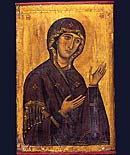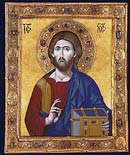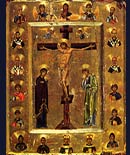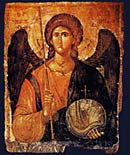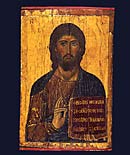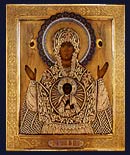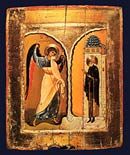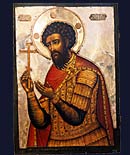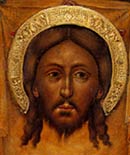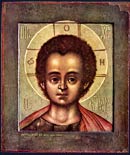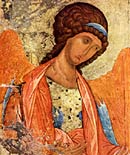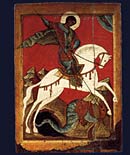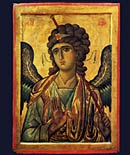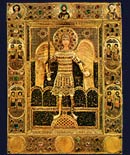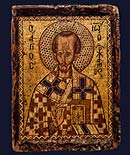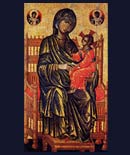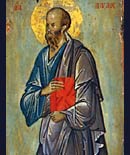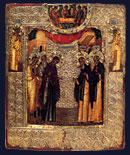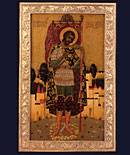Gallery - Christ Pantokrator from Sinai
33.1 x 19.4 in 84 x 45.5 cm
Encaustic painting on Wood
Mid-6th century
St. Catherine's Monastery, Sinai
This famous ikon of the Savior was a gift of the Emperor Justinian to the Monastery in the 6th century. The Emperor gave the funds for the building and embelishment of the Monastery church which was constructed of local materials. It is most likely that the Emperor commissioned this ikon in Constantinople to be sent and his personal contribution to the decoration of the sanctuary.
The ikon is painted in a hot wax technique that requires total mastery of the media and a sure hand. Spatulas are used to manipuate the colored waxes which fuse as they cool. Encaustic painting was used across the Roman world and many examples have survived from burials in Roman-era Egypt.
The Savior is dressed in dark blue and purple robes which contrast with the gold and jewelled Gospels he holds in his left hand and arm. He gently raises His hand in blessing. The face is very pale - almost bloodless - radiating light from within. Christ's features are austere and idealised.
Many ancient and late antique portraits show asymmetrical eyes to create an illusion of depth. This is not the primary reason for the difference in the right and left eyes of Christ. Damage to the left eye (corrected in this image) accentuated the lack of symmetry in the eyes, which was unintentional and probably due to the rapid nature of painting with waxes. It was difficult to correct mistakes or errors after a painting had been completed.
Encaustic painting on Wood
Mid-6th century
St. Catherine's Monastery, Sinai
This famous ikon of the Savior was a gift of the Emperor Justinian to the Monastery in the 6th century. The Emperor gave the funds for the building and embelishment of the Monastery church which was constructed of local materials. It is most likely that the Emperor commissioned this ikon in Constantinople to be sent and his personal contribution to the decoration of the sanctuary.
The ikon is painted in a hot wax technique that requires total mastery of the media and a sure hand. Spatulas are used to manipuate the colored waxes which fuse as they cool. Encaustic painting was used across the Roman world and many examples have survived from burials in Roman-era Egypt.
The Savior is dressed in dark blue and purple robes which contrast with the gold and jewelled Gospels he holds in his left hand and arm. He gently raises His hand in blessing. The face is very pale - almost bloodless - radiating light from within. Christ's features are austere and idealised.
Many ancient and late antique portraits show asymmetrical eyes to create an illusion of depth. This is not the primary reason for the difference in the right and left eyes of Christ. Damage to the left eye (corrected in this image) accentuated the lack of symmetry in the eyes, which was unintentional and probably due to the rapid nature of painting with waxes. It was difficult to correct mistakes or errors after a painting had been completed.
< last: Ikon of the Archangel Michael next: Our Lady of Vladimir >

